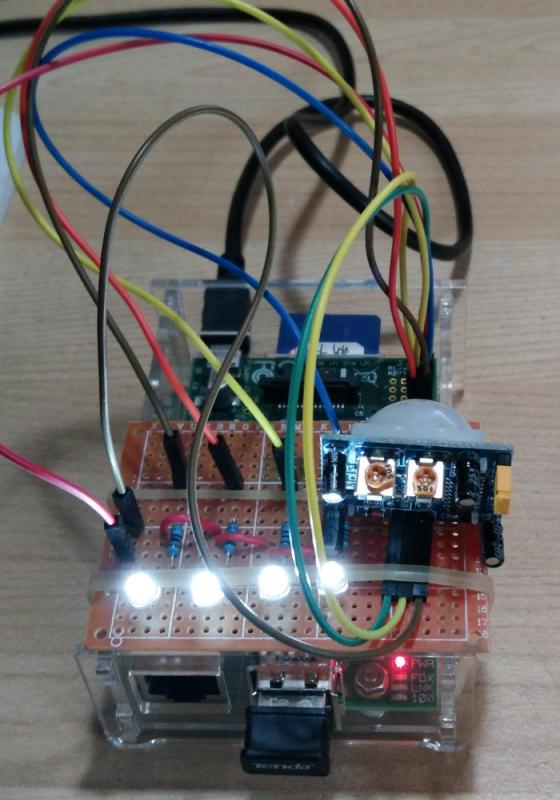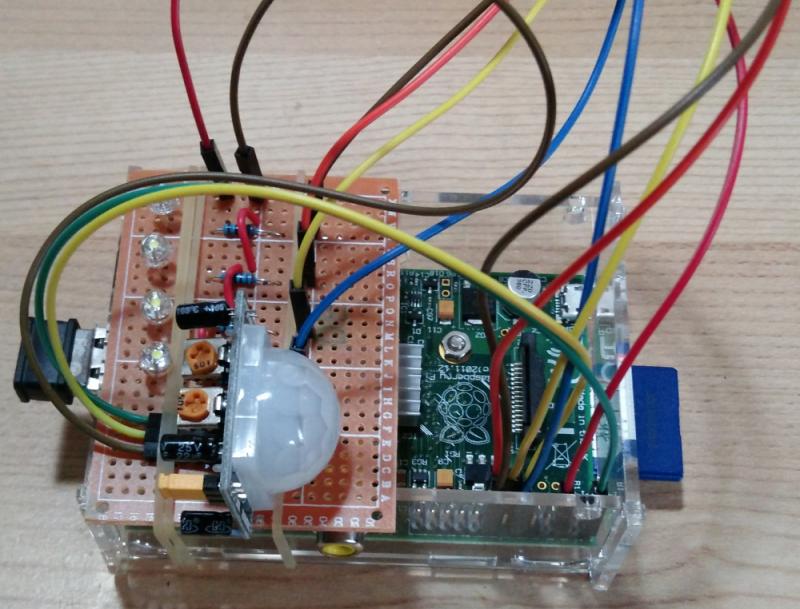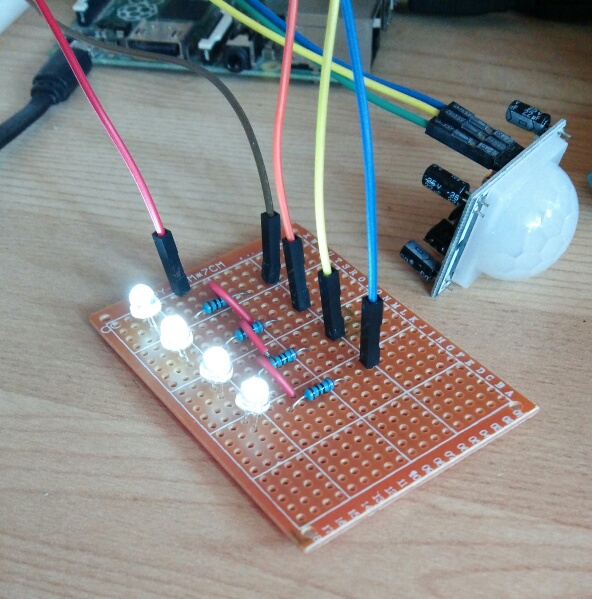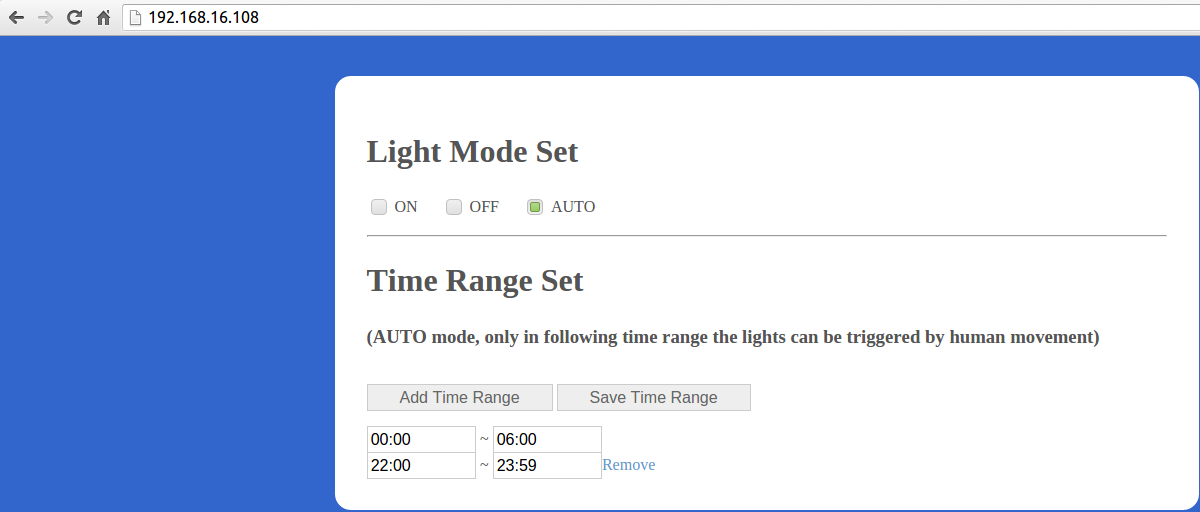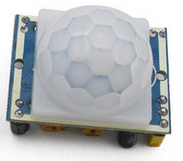I only tested this system on Raspberry Pi Model B+(Revision 1.2) & Model B(Revision 2), but it should work on other models of RPi too, except that the hardware wiring should be some difference, and the code should need no modification.
Environment:
Raspberry Pi model: B+/B
OS: Arch Linux ARM
You can use this project to build a human sense light, in short, when a person gets close to the light, the pyroelectric module connected to Raspberry Pi will detect the human movement & ouput a high level to one of the GPIO port on RPi, then the program runs on RPi will light up some LEDs connected to it. Also, you can set the time range of day, only in those time range the LEDs can be lighten up, and in other time range the LEDs will be turned off.
Before compiling this project, you should have some software packages installed on your Arch Linux ARM(besides the basic development tools such as gcc, etc.):
-
WiringPi(a GPIO access library for Raspberry Pi)
git clone git://git.drogon.net/wiringPi && cd wiringPi && ./build
-
glog(Google logging module)
pacman -S google-glog
-
libconfig(C/C++ Configuration File Library)
pacman -S libconfig
-
gtest(Google's C++ test framework) - to run the unit tests in this project
pacman -S gtest
Buy essencial electronic components and build the hardware system according to the circuit diagrams.
make && make install
vim deploy/conf/main.conf
vim deploy/conf/time-range.txt
cd deploy/bin
./run-timer-sense-light.sh
use any web browser to visit the web UI to set parameters(assume that your RPi's IP address is 192.168.16.108)
http://192.168.16.108
You should prepare some specific hardware components for this project, including:
Install WiringPi, then execute command "gpio -v" to get RPi's revision, the output info looks like:
gpio version: 2.25
Copyright (c) 2012-2015 Gordon Henderson
This is free software with ABSOLUTELY NO WARRANTY.
For details type: gpio -warranty
Raspberry Pi Details:
Type: Model B+, Revision: 1.2, Memory: 512MB, Maker: Sony
Add machine-learning ability to the system, to let it auto-adjust the time range according to history human movement data.
